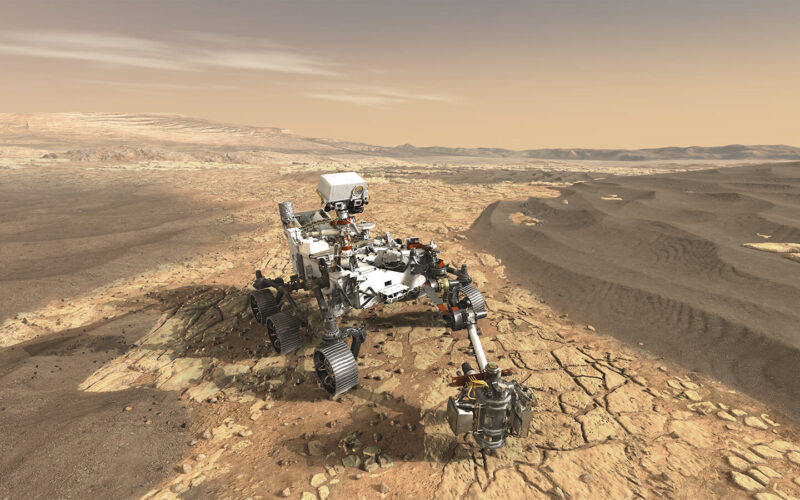The launch window to the planet Mars of summer 2020 generates an international emulation
During the summer of 2020 will open a launch window towards the planet Mars. Four space agencies will try to land three rovers there. NASA with the Mars 2020 mission, ESA and Roscosmos with rover Rosalind Franklin and lander Kazachoc as part of the ExoMars mission, and the CNSA, the Chinese space agency, with the rover of the mission HX-1.

ExoMars descent and landing modules separate from carrier. Image credits : ESA/OHB
Of these four actors, only the US space agency has already managed to land on the planet Mars. This is a situation that could extend beyond 2020. Indeed, some difficulties cause fears of delays on both the European and Chinese sides. To land on the planet Mars is not easy. You have to juggle between heat shield, parachute, retrorockets and a giant airbag in just a few minutes.
A parachute issue could ruin the Russian-European mission
The Russian-European mission makes the choice of a particularly complex parachute sequence. It will have to deploy successively four parachutes : two pilot parachutes and two main parachutes. The last of them, with its 35 meters in diameter, will be the largest parachute ever used in the Martian atmosphere. To ensure a smooth landing, a set of tests has been planned on Earth, and they do not really go as planned.
On May 28, 2019, the deployment sequence was tested a first time with a drop from a stratospheric balloon at 29 km altitude. The sequence as a whole went rather well but the canvas of the two main parachutes suffered damage before the full redeployment. A scenario that, reproduced in the Martian atmosphere, would put the mission in danger. On August 5, 2019, a new test was conducted. It focused on the deployment of the largest main parachute, and again the canvas was damaged, so much so that only the pilot parachute braked the fall of the test capsule.
Less than a year from the official launch date, ESA and Roscosmos must react very quickly. Two more parachute tests are planned. They will take place in the United States at the end of the year and at the beginning of 2020 ideally. NASA engineers will take advantage of this to bring their expertise, but the ExoMars mission flirts with the limits of its launch schedule. It may be necessary to consider a postponement to the next launch window and therefore a wait of 26 additional months.
The Chinese mission depends on the availability of its Long March 5 rocket
The Chinese HX-1 mission could suffer the same delays but not for the same reasons. Like all of the most ambitious missions in the Chinese space program, it faces the unavailability of heavy launcher Long March 5, which suffered a failure during its second flight in 2017. Since then, its third flight is constantly delayed. When the launcher will be able to fly again, it will have to achieve missions of the highest importance.

Long March 5 rocket. Image credits : 篁竹水声 [CC BY 4.0 (https://creativecommons.org/licenses/by/4.0)]
First, the launch of a large telecommunications satellite, then the fifth mission of the Chang’e lunar program, followed by the first Chinese Martian mission. Afterwards, it will focus on the launch of the future Chinese space station. This schedule assumes that the Long March 5 rocket makes 3 flights by the summer of 2020, which appears more and more complicated.
To avoid getting too late, China could make the choice to launch HX-1 before Chang’e 5. Starting first, the Martian mission would avoid the shift to the launch window of 2022. Chang’e 5 could then easily be reprogrammed. We will know in the coming months how many missions will finally be ready to leave towards planet Mars in the summer of 2020.

